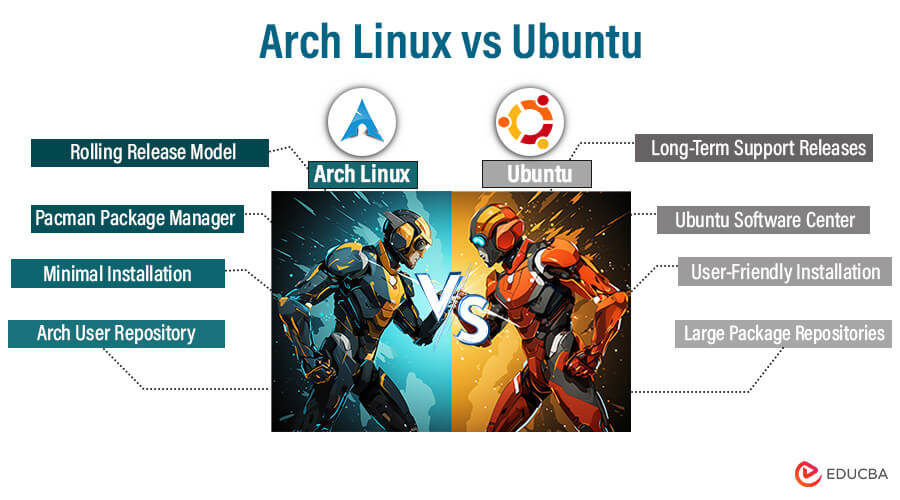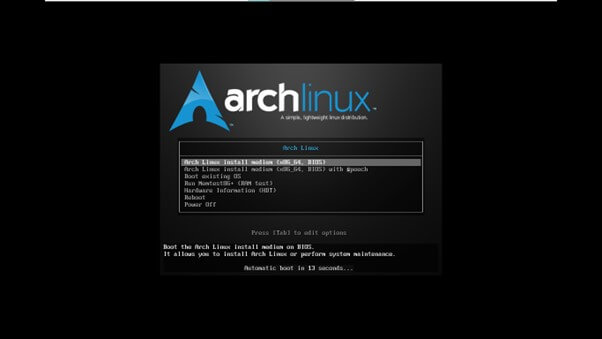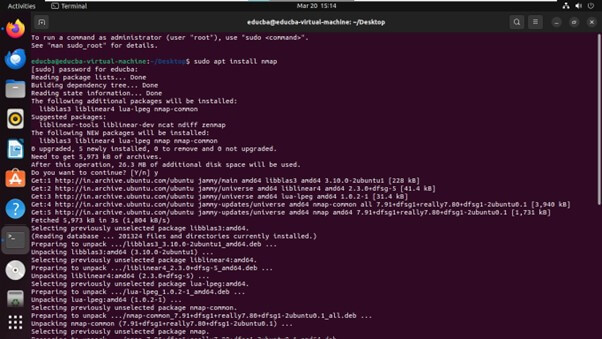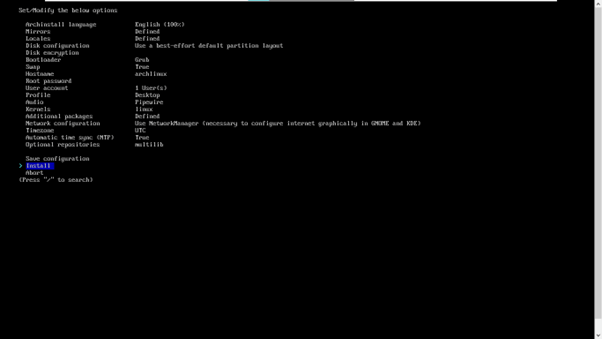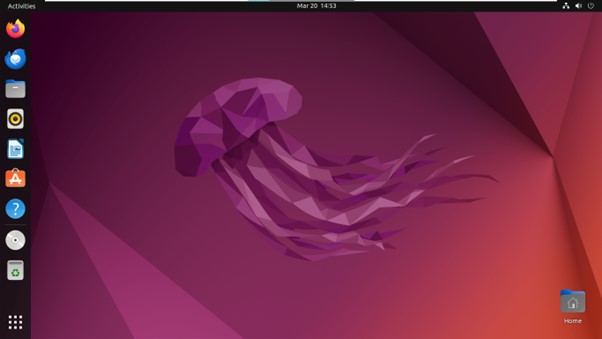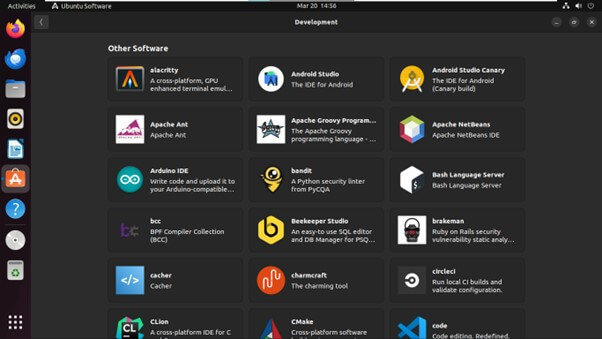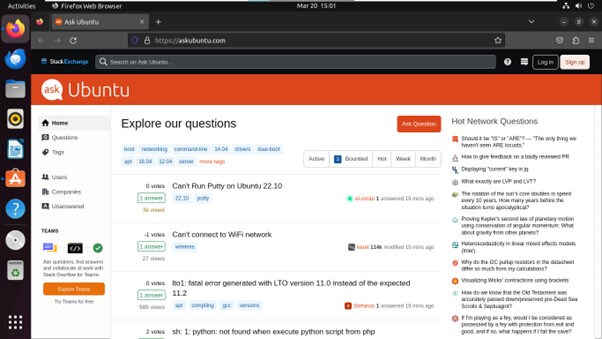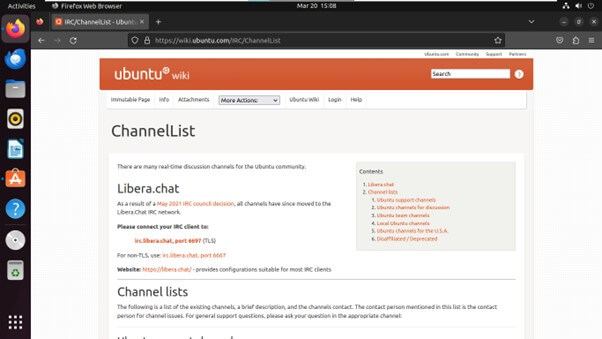Introduction to Arch Linux vs Ubuntu
So, you’ve decided to ditch the familiar Windows or macOS and dive headfirst into the exciting, open-source world of Linux. Welcome aboard! But with countless Linux distributions (distros for short) out there, choosing the right one can feel like picking a favorite puppy – overwhelming and adorable in equal measure. Two of the most popular distros, Arch Linux and Ubuntu, often find themselves locked in a metaphorical cage match, leaving newbie Linux users wondering: which distro should I choose? Fear not, intrepid explorer! This guide will break down the fundamental difference between Arch Linux vs Ubuntu, helping you decide which one best suits your needs and comfort level.
Table of Contents
Installation Experience
Arch Linux
1) DIY approach: Installation incorporates customizing network settings, manually dividing disks, configuring the bootloader, and installing vital packages.
2) Command-line mastery: Demands proficiency with command-line tools and text-based configuration files.
3) Greater control: Users have detailed control over every element of the system, enabling a highly configured installation crafted to particular requirements.
4) Minimalist: The installation method installs only precise elements, enabling users to assemble their system with the software they desire.
Ubuntu
1) User-friendly graphical installer: Ubuntu offers a graphical installer that guides users through the setup using a sequential guide.
2) Ideal for beginners: Crafted with ease in mind, Ubuntu’s installer is appropriate for beginners who may not have expertise in command-line tools.
3) Automated setup: The installer takes care of processes like network customization, package installation, and disk partitioning, mitigating the need for manual interference.
4) Pre-configured environment: Ubuntu incorporates multiple pre-installed software and setups, making it more straightforward for users to start without setting up entirely from the beginning.
Philosophy and Design
Arch Linux and Ubuntu are seen as two extremes in terms of user suitability, mainly due to their distinct philosophy. Arch is a project driven by the community, constructed from the ground up, while Ubuntu, initiated by the Ubuntu Foundation, is derived from Debian Linux.
Arch Linux
Arch Linux is a functional and lightweight operating system. It encourages a Do-It-Yourself approach so that the users can customize the system while maintaining its integrity. Arch Linux allows users to choose packages they want to install with a minimalist foundation base, making it popular among developers and professionals.
Arch Linux is known for promoting “The Arch Way” philosophy; below is the set of principles followed by Arch Linux:
1) Simplicity – The Arch Linux OS offers simplicity by providing a straightforward and minimal-base system. It avoids unnecessary additions, and users configure a major part of the system from a text editor or shell, as GUI configuration utilities are not officially provided.
2) Modernity – Arch aims to maintain its latest stable version while minimizing the risk of Systemic package breakage. The OS operates on a Rolling-realise system with one-time installation with in-progress updates. It incorporates the latest Linux features, such as modern file systems, RAID, LVM2, and the latest available kernels.
3) Pragmatism – Arch Linux embraces a pragmatic approach instead of being ideological. Arch principles follow practical guidelines, and the developer’s consensus decides on designs based on evidence-based analysis instead of politics or popular opinion.
4) User-centrality – Arch Linux will always remain user-centric, as it prioritizes the needs of its contributors rather than appealing to a wider user base. The Arch target audience is skilled Linux users or users with a Do-It-Yourself attitude willing to solve issues by studying documentation.
5) Versatility – Arch Linux is a general-purpose distribution with a command-line environment. The Arch users are encouraged to build their custom system with the high-quality packages offered by its official repositories.
Ubuntu
Ubuntu is structured for Linux users who want a seamless experience with a pre-set system. It includes abundant pre-installed packages, spanning from email clients to music players and productivity suites. However, this abundance of pre-configured software may result in a disorganized system with programs that users may never utilize.
The slogan “Linux for human beings” demonstrates Ubuntu’s dedication to offering a system that is handy, ready-to-use desktop experience without the requirement of extensive configuration. This approach makes Ubuntu highly demanding among Linux beginners.
Moreover, Ubuntu parts itself through its emphasis on community-driven development. A varied global community of testers, emerging developers, and tech enthusiasts vibrantly engage in its current enhancement. These combined endeavors conclude a polished and well-assisted operating system, assuring a high level of dependability and consistency for users.
Package Management and Software Availability
Arch Linux
1) Package Manager: Arch Linux employs the Pacman package manager, renowned for its rapidity and effectiveness, it uses a straightforward command-line interface for installing packages from the repositories in your system. Pacman supports simple installation, removal, and updates; it handles dependencies efficiently by automatically installing all the required components and libraries.
2) Software Availability: Arch Linux follows a rolling release model where the user does not need to reinstall the operating system after its first installation as it allows the user to upgrade their system to the latest software version as soon as it becomes available. It provides a vast selection of packages from essential system utilities to desktop environments, multimedia applications, and development tools.
Ubuntu
1) Package Manager: Ubuntu uses the Advanced Package Tool (APT) which simplifies package management by maintaining integrity during system installation, upgrades, and resolving dependencies. Ubuntu software center offers users with graphical interface for installing applications and browsing.
2) Software Availability: Ubuntu has extensive software repositories that contain a vast number of categorized packages for easy access. Moreover, Ubuntu provides Snap packages, which enable developers to distribute software with bundled dependencies, ensuring software security and availability.
Customization and Control
Arch Linux and Ubuntu have distinct customization features. Linux provides a Do-It-Yourself feature where users can customize according to their needs, and Ubuntu allows users to make a one-time setup, which ensures hassle-free configuration.
-Arch Linux
Arch Linux is structured with unique personalized features and capabilities that allow users to tailor their system according to their preferences. Users can personalize every aspect of the system, from system configuration to choosing package installation. The Arch minimal base installation offers users a blank canvas to build with which users can create a system according to their needs.
Arch Linux offers users complete control over a system where users can control the desktop environment, system service, display manager, and window manager. The Arch rolling release manager allows users to access the latest software features and updates
-Ubuntu
Customization – Although Ubuntu is not as modifiable as Arch Linux, it still features a good amount of customization choices. Users can opt for different flavors of Ubuntu, each offering a specific desktop environment such as KDE, GNOME, LXQT, etc. Moreover, Ubuntu enables users to install and modify various icons, themes, and extensions to tailor their desktop events.
Control – Ubuntu sustains an equilibrium between simpler execution and control. Although it may not include the same level of granular control as Arch Linux, it enables users with adequate command over their system through graphical amenities and prompt tools. Users can configure, install packages, and administer system services to a certain degree, even though with minimum granularity
Desktop Environments
Arch Linux
1) Customizability – Arch Linux incorporates advanced customization for desktop environments, allowing users to craft their environment to their desired choice and needs.
2) Rolling Release Model: Arch Linux adheres to a rolling release structure, assuring users have connectivity to the upgraded versions of desktop environments and notifying them when the updates are released.
3) Minimalistic Approach: Arch Linux focuses on easiness providing users with the liberty to develop their desktop environment from scratch, choosing only the elements they require.
4) Access to AUR: Arch Linux users can exploit the Arch User Repository (AUR) to take benefits of add-ons like themes, customization tools, extensions, environment components, etc.
Ubuntu
1) Ease of Installation: Ubuntu offers a simpler setup process, incorporating a graphical installer, which assists users at all levels of technical installation.
2) Default Desktop Environment: GNOME is part of Ubuntu as the default desktop environment, providing a contemporary and user-friendly UI that incorporates system settings and applications.
3) Stability: Ubuntu focuses on robustness and consistency, going for well-tested and integrated software elements to assure a smooth user experience.
4) Software Center: Ubuntu features a Software Center that simplifies the installation and management of desktop environments and applications, offering a curated selection of software from official repositories.
While Arch Linux offers unmatched flexibility and customization choices, Ubuntu offers a consistent and user-friendly experience.
Community and Support
Arch Linux
Arch Linux has a huge and vibrant community comprising tech experts, emerging developers, and Linux professionals. Users can pursue assistance, contribute technical expertise, and join others through various platforms, such as
1) IRC channels – Arch Linux maintains numerous SRC channels where users can engage with one another and exchange ideas.
2) Subreddit – Arch has a vibrant and ingenious Subreddit where users interact and ask for help.
3) Mailing lists – A mailing list is also available for user interaction.
The Arch Wiki is a thorough and trendy documentation resource where users can find well-explained guidelines, examples, tutorials, troubleshooting tips, and best practices for almost every segment of Arch Linux. The community sustains it and covers multiple subjects, making it a valuable resource.
Ubuntu
Ubuntu also has a sturdy and vibrant community with a wide range of many assets. Users ask for assistance and interact with others through questions, forums, and platforms like
1) Ask Ubuntu – Ask Ubuntu is a question-and-answer portal crafted precisely for users of the Ubuntu environment. It acts as a central point where users can seek answers to their queries about Ubuntu-related issues.
2) Subreddit – From engaging in conversation, sharing thoughts, and experiencing the latest news, the Ubuntu subreddit is a friendly and community-driven portal.
3) IRC channels – Ubuntu has multiple IRC channels to assist users in interacting with each other and solving their doubts in real time.
The community belongs to users from freshers up to professionals.
Ubuntu offers comprehensive official documentation encompassing various segments such as installation, system operations, safety, and troubleshooting. Moreover, there is a Community Help Wiki contributed by the community, offering tutorials, guides, and solutions to common problems. Official manuals provide offline reference material for users.
In summary, both Arch Linux and Ubuntu have vibrant communities and comprehensive documentation resources to assist users.
Comparison Table of Arch Linux vs Ubuntu
The primary Comparisons are discussed below:
| Sr. No. | Section | Arch Linux | Ubuntu |
| 1 | Installation | Manual setup | Graphical setup with guidelines |
| 2 | Package management | AUR (Arch User Repository), Pacman Package manager | Debian Packages, Apt package manager |
| 3 | Customization | Highly customizable and can be developed from scratch | Can be modified but not in detail. |
| 4 | Release Model | Rolling Release | Regular releases, LTS |
| 5 | Desktop Environment | Multiple options with minimum default settings | The default setting is GNOME, but it can be modified and changed. |
| 6 | Hardware support | Huge hardware support, kernel Updates | Good hardware support and kernel updates. |
| 7 | Community support | Vibrant community and documentation covering various segments. | Large community, official forums, and guidelines. |
Choosing the right Linux distribution (Arch Linux vs Ubuntu)
When to Choose Which
Selecting from Arch Linux and Ubuntu relies on your specific requirements. Here are some situations in which one system might be more preferable than the other:
Select Arch Linux when you need:
1) Customization: if you need a highly modifiable system and want full command over every component of your environment.
2) Minimalism: if you need a simple approach and want to craft your system from scratch, set up only the elements you require.
3) Rolling Release: if you want to install most upgraded versions and updates as soon as they are released.
4) Technical Proficiency: if you have intermediate to advanced Linux skills and enjoy tinkering with your system, configure it to your exact specifications.
Select Ubuntu when you need:
1) Ease of Use: If you like the easiness of operating and want a distribution that is beginner-friendly and easy to set up and customize.
2) Stability: If you favor a consistent and dependable system with long-term assistance, specifically for difficult tasks or production environments.
3) Large Software Repository: If you need entry to a vast documentation and repository of pre-assembled software packages and want multiple choice of applications instantly accessible for installation.
4) Community and Support: If you value a huge and vibrant community for issue-solving, educating, and seeking assistance with your Linux environment.
Hence, select Arch Linux if you require customization, command on tools, and the latest software updates and have the technical skills to administer a more handy strategy. Go for Ubuntu if you need simpler execution, consistency, and wide community support, especially if you are a beginner to Linux or prioritize a stable and dependable environment for everyday operations
Conclusion
Hence, the choice between Arch Linux and Ubuntu relies on elements such as installation inclination, philosophical synchronization, software accessibility, modifications, desktop environment suitability, and community support expectations. By evaluating these parameters, users can make strong decisions and assuring they have opted for the Linux distribution that best collaborates with their specific requirements.
Frequently Asked Questions (FAQs)
1) What is ABS (Arch build system)?
Answer: – The Arch Build System (ABS) is a package developing system. It enables users to build customized packages for software that are not a part of the official documentation and repository. ABS incorporates a framework and tools to retrieve and compile source code, produce package metadata, and develop custom packages that can then be installed using the package manager pacman.
2) What are Ubuntu’s LTS and Non-LTS releases?
Answer: Ubuntu’s LTS releases are integrated with upgrades and safety patches for 5 years on server as well as desktop, while Ubuntu’s Non-LTS releases are supported for 9 months only. LTS releases are for those who emphasize consistency, while non-LTS releases are for those who emphasize frequent upgradation.
3) How do Arch Linux and Ubuntu manage software licenses and packages?
Answer: Arch Linux obeys a rigorous policy of distributing FOSS (free and open source software), following deeply the rules of software freedom. Ubuntu also works on the principle of FOSS, but its natural approach is realistic. It includes firmware, proprietary drivers, and ready-to-use codecs to enhance hardware compatibility and assistance for users
Recommended Article
This has been a guide to the top differences between Arch Linux vs Ubuntu. Here we also discuss the key differences comparison table. You may also have a look at the following articles.

